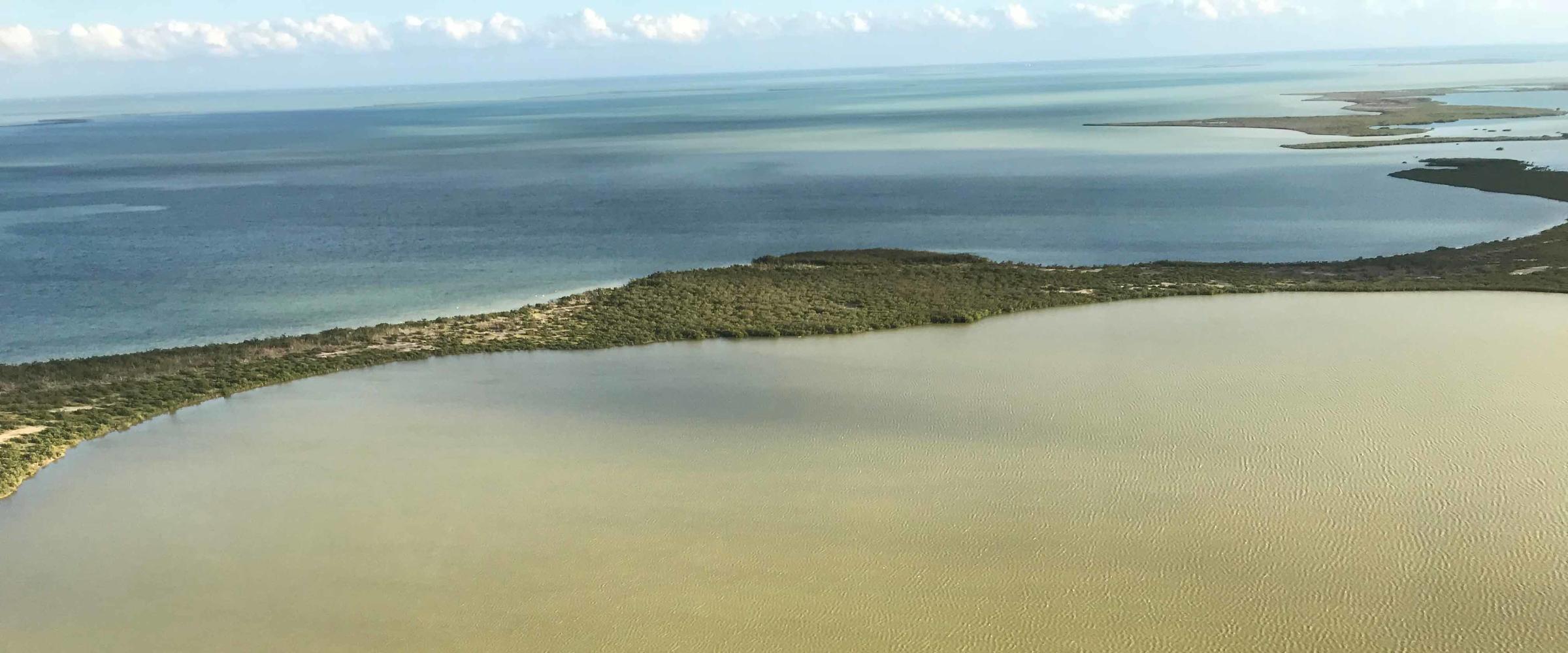Florida Bay, the vast lagoon between the Florida Keys and the mainland, is home to some of the most unique wildlife and habitat in the world. But this special place is telling us something is wrong. Putrid green algal blooms are appearing in the bay, and data from Audubon’s Everglades Science Center attribute the blooms to the lack of freshwater flows reaching Florida Bay. This lack of freshwater causes hypersalinity and a cascading effect that begins with seagrass dieoffs and culminates in algal blooms.
As an estuary, Florida Bay is incredibly sensitive to the quantity of freshwater it receives. In the right conditions, seagrass, fish, and other wildlife thrive in Florida Bay. But without sufficient freshwater, salinity rises and endangers the seagrass, fish, and invertebrates that provide important ecological functions like oxygenating and filtering the water.
Historically, freshwater would freely flow from Lake Okeechobee in Central Florida through America’s Everglades and into Florida Bay. Today, however, choked Florida Bay only receives a fraction of this much-needed freshwater- making conditions more conducive for algal bloom development in this sensitive ecosystem.
Reconnecting Florida Bay to Lake Okeechobee is the key to increasing the much-needed flow of clean freshwater that will help restore Florida Bay. Before reaching the bay, Lake Okeechobee’s water flows through marshes, swamps, and wetlands throughout the Everglades that clean the water and scrub excess nutrients.
Mild hypersalinity now regularly plagues Florida Bay, making it even more vulnerable to the impacts of storms and droughts. Recently, Hurricane Irma served as a reminder of how fragile this ecosystem is. The storm stripped seagrass from the Gulf of Mexico and literally deposited tons of dead seagrass into Florida Bay. As the seagrass decayed, it released nutrients and depleted the oxygen. This burst of nutrients stimulated algae to explode, and the lack of oxygen compounded the impact by killing the fish and invertebrates that normally filter the water and consume algae. As the blooms spread, they reduced sunlight through the water column, further stressing the remaining seagrass.
Increasingly frequent droughts, lack of freshwater, and extreme storms set off what seems to be an unending vicious cycle of algal blooms in Florida Bay. But there is hope for the 850 square miles of lagoons that make up Florida Bay: Restoring the historic freshwater flow by advancing Everglades restoration. Audubon’s strategic priorities for a healthy Florida Bay include:
• Implementing the Central Everglades Project (CEP),
• Bridging Tamiami Trail,
• Folding all of the Southern Everglades projects into one combined operational plan, and
• Advancing water storage south of Lake Okeechobee as laid out in Senate Bill 10 (2017).
Combined, these projects store, clean, and remove barriers to send more freshwater from Lake Okeechobee southward toward Florida Bay and the Gulf of Mexico while reducing harmful discharges to the east and west coasts. If freshwater from Lake Okeechobee through the Everglades to Florida Bay is restored to better reflect historic flows, the current situation of recurring ecological collapses can be brought to an end.
Learn more about Audubon’s work in America’s Everglades in our latest edition of the State of the Everglades at FL.Audubon.org/EvergladesReport.




